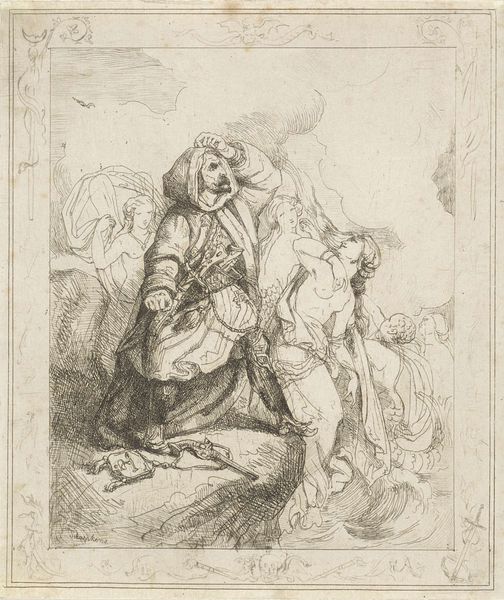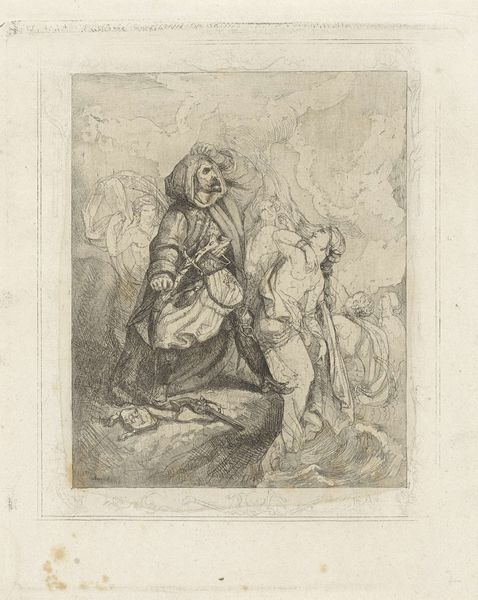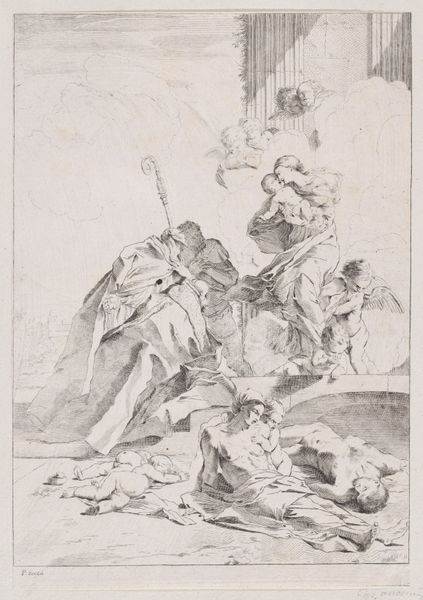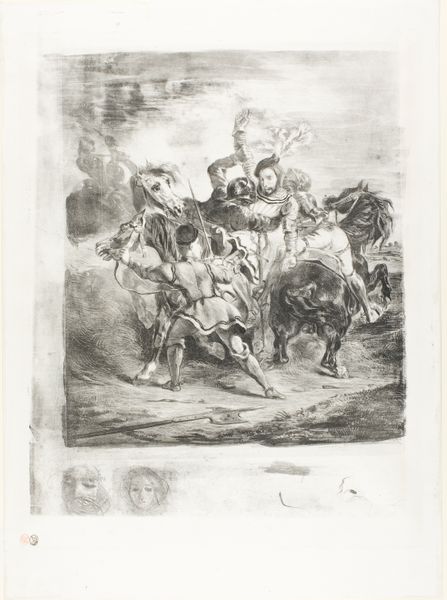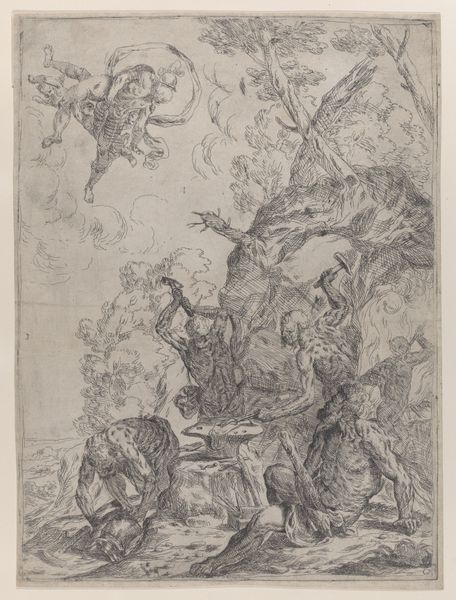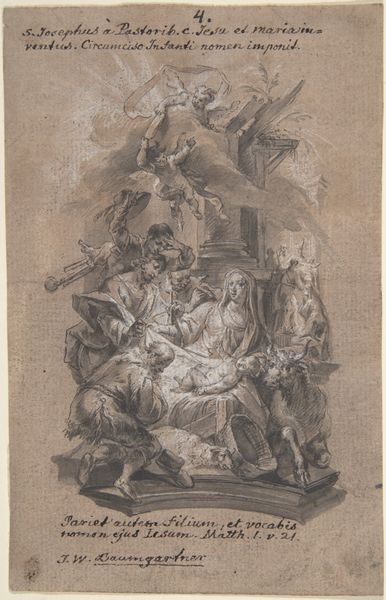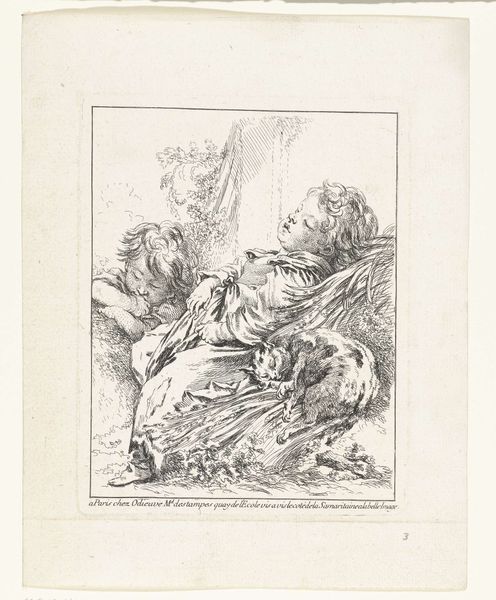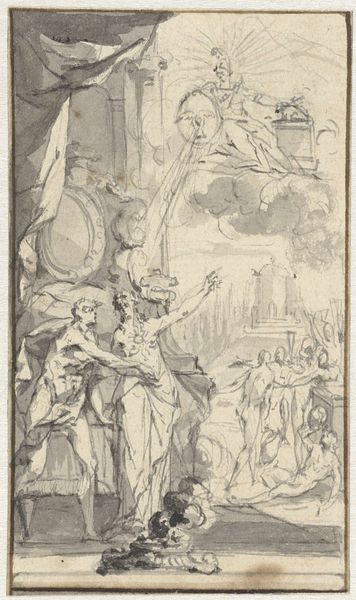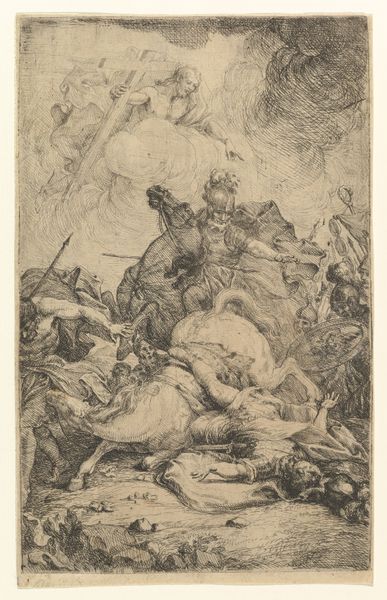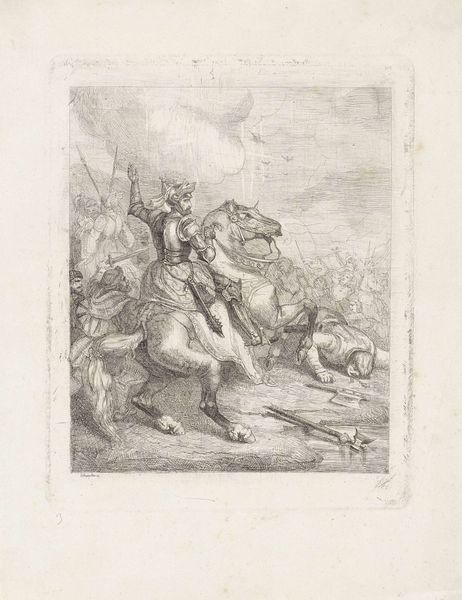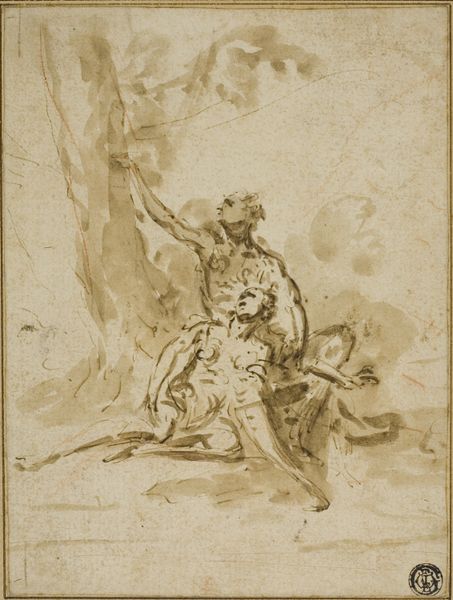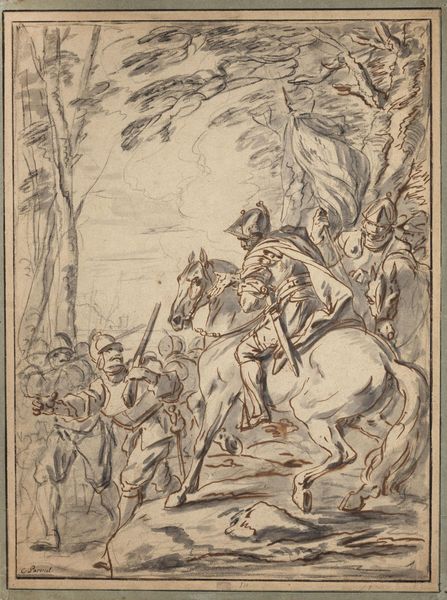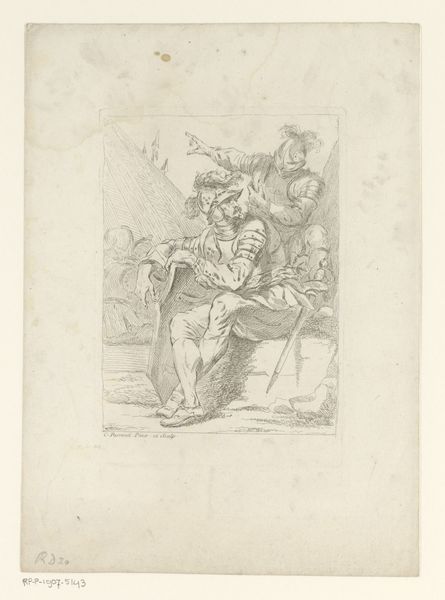
Dimensions: height 183 mm, width 156 mm
Copyright: Rijks Museum: Open Domain
Curator: Immediately, there's a palpable sense of urgency and terror. The composition, with the looming figure and distressed women, throws me right into the heart of something awful. Editor: Indeed. What we're viewing here is "Greek Women and a Turkish Warrior," a drawing executed with pencil by Theodoor Schaepkens, dating sometime between 1825 and 1883. It's currently held at the Rijksmuseum. The theme firmly places it within historical painting, wouldn't you agree? Curator: Oh, absolutely. But there's also something wonderfully unhinged about it. The frantic lines, the almost cartoonish exaggeration of the Turk’s expression...it's less a document and more a nightmare rendered in pencil. I feel like the artist isn't necessarily trying to depict the events with precision. The artwork triggers within me the sense of the terror those women must have been in. Editor: I think you're right. We must see that the artist's intent isn't necessarily to faithfully capture historical events but rather to explore the power dynamics inherent in conflict and oppression. Think about it within the context of Orientalism and the 19th-century fascination with the "exotic" East, rife with power imbalances and stereotypes. The scene, drawn with such drama, reflects those colonial anxieties. Curator: You know, there’s a performative quality here, too. It's not just about the events, it's the story—the story someone *wants* to believe, perhaps to make sense of those imbalances. You see it in how theatrical the male figure is and his gesture… and perhaps the almost absurd anguish etched on their faces is intentional? Maybe to invite a sneer or to invoke that colonial gaze that, in fact, confirms biases and power dynamics? Editor: It's a narrative of dominance, constructed for a Western audience likely unfamiliar with or disinterested in the actual complexities of Greek-Ottoman relations. It's a visual tool of othering. Schaepkens paints them, their anxieties, their stereotypes. Curator: It really sticks in your craw, doesn’t it? Makes you question everything. Like looking into a historical mirror that reflects our present prejudices. Editor: Precisely. It invites us to confront the legacies of colonialism and power, reminding us how visual representations shape understanding. Curator: Yes, to not take anything at face value and continue looking beneath. Editor: An artist sketching their society.
Comments
No comments
Be the first to comment and join the conversation on the ultimate creative platform.
